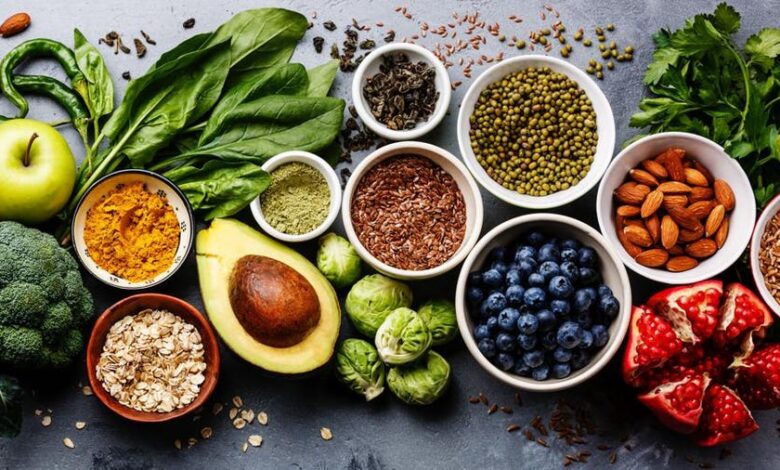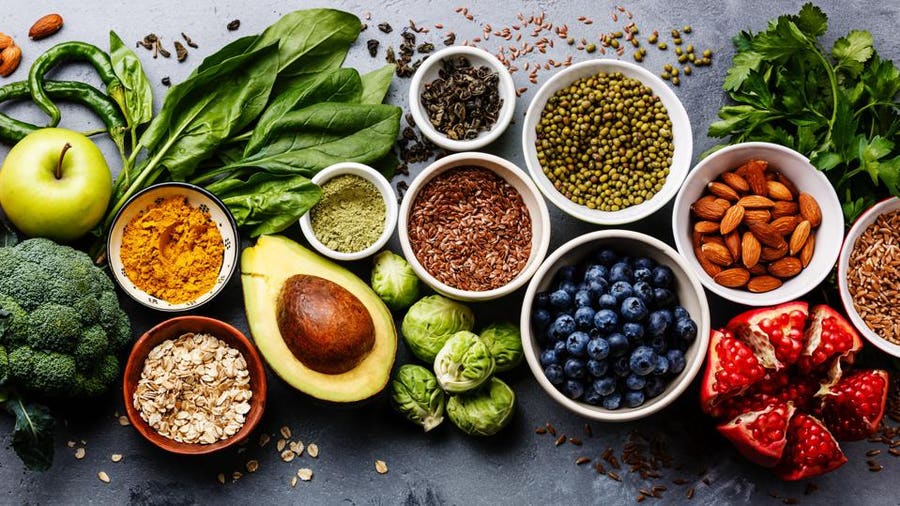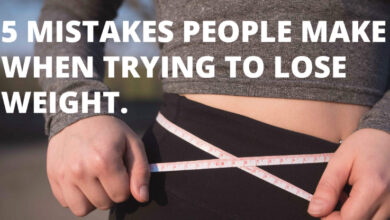
How to Avoid Falls: 7 Biggest Diet Traps
How to avoid falls 7 biggest diet traps – How to Avoid Falls: 7 Biggest Diet Traps – Have you ever wondered how your diet impacts your balance and risk of falling? It’s a connection that many people don’t realize, but the truth is, what you eat plays a crucial role in maintaining your stability and preventing falls.
Our bodies rely on a variety of nutrients to support our bones, muscles, and overall health, and deficiencies in these vital elements can leave us vulnerable to accidents.
This article will explore the seven most common dietary pitfalls that increase your risk of falls. We’ll delve into the mechanisms behind these traps, examining how they impact your balance, strength, and bone health. Armed with this knowledge, you’ll be able to identify and avoid these traps, paving the way for a more balanced and fall-free life.
Understanding Fall Risks Associated with Diet
Your diet plays a crucial role in maintaining balance and reducing your risk of falls. It’s not just about calories; certain nutrients are vital for bone health, muscle strength, and overall stability, which directly impact your ability to stay upright and avoid falls.
Nutrients Essential for Fall Prevention
Understanding the connection between diet and falls is vital. A balanced diet rich in essential nutrients can significantly contribute to reducing your risk of falls. Here are some key nutrients and their roles in maintaining balance and preventing falls:
- Calcium: Calcium is essential for strong bones, which provide the framework for our bodies and help us maintain stability. Adequate calcium intake is crucial for preventing osteoporosis, a condition that weakens bones and increases the risk of fractures, which can lead to falls.
- Vitamin D: Vitamin D plays a vital role in calcium absorption, ensuring our bodies can effectively utilize calcium to build and maintain strong bones. It also influences muscle function, contributing to overall balance and stability.
- Protein: Protein is essential for building and repairing muscle tissue, including the muscles responsible for balance and coordination. Adequate protein intake helps maintain muscle mass and strength, reducing the risk of falls.
- Potassium: Potassium is an electrolyte that helps regulate muscle contractions and nerve impulses. It plays a role in maintaining muscle function and reducing the risk of falls.
- Vitamin B12: Vitamin B12 is crucial for nerve function and red blood cell production, both of which are essential for maintaining balance and coordination. Deficiency in Vitamin B12 can lead to impaired nerve function and increased risk of falls.
Research Findings on Diet and Falls, How to avoid falls 7 biggest diet traps
Numerous studies have highlighted the link between dietary habits and fall incidence.
Avoiding falls is a top priority, and one of the biggest diet traps is neglecting nutrient-rich foods. Sweet potatoes are a powerhouse of vitamins and minerals, and luckily, they’re incredibly easy to prepare! For a delicious and healthy side dish, try this slow cooker vegan mashed sweet potatoes recipe.
The slow cooker does all the work, leaving you with creamy, flavorful mashed sweet potatoes that are perfect for a balanced meal. Remember, a balanced diet is key to preventing falls and maintaining overall health.
A study published in the “American Journal of Clinical Nutrition” found that individuals with a higher intake of fruits and vegetables had a lower risk of falls.
Another study published in the “Journal of the American Geriatrics Society” demonstrated that a diet rich in calcium and vitamin D was associated with a reduced risk of hip fractures, a common consequence of falls.
These findings emphasize the importance of a balanced diet in reducing the risk of falls, particularly for older adults.
The Biggest Dietary Traps for Fall Prevention: How To Avoid Falls 7 Biggest Diet Traps
A well-balanced diet is crucial for maintaining bone health, muscle strength, and overall well-being, all of which are essential for preventing falls. However, certain dietary choices can unknowingly increase the risk of falls. Here we’ll explore the top 7 dietary pitfalls that can compromise your balance, strength, and bone health.
Low Calcium Intake
Calcium is a vital mineral for bone health, and inadequate intake can lead to osteoporosis, a condition characterized by weakened bones that are prone to fractures.
Low calcium intake can weaken bones, increasing the risk of falls due to fractures.
A diet deficient in calcium can make bones brittle and susceptible to fractures. This is particularly concerning for older adults, as their bones naturally become thinner and weaker with age.Examples of low calcium intake in everyday life:* Skipping dairy products:Milk, yogurt, and cheese are excellent sources of calcium, and omitting them from your diet can significantly reduce your calcium intake.
Choosing calcium-poor alternatives While plant-based milk alternatives like almond milk and soy milk can be nutritious, they are often fortified with calcium, but not always at levels comparable to cow’s milk.
Limited leafy green consumption Leafy green vegetables like kale, spinach, and collard greens are good sources of calcium, but they are often under-consumed.
Inadequate Vitamin D Intake
Vitamin D plays a crucial role in calcium absorption, and its deficiency can hinder the body’s ability to utilize calcium effectively.
Inadequate vitamin D intake can lead to poor calcium absorption, weakening bones and increasing the risk of falls.
Insufficient vitamin D levels can weaken bones, increasing the risk of falls due to fractures. Vitamin D deficiency is particularly common among older adults, as their skin’s ability to produce vitamin D from sunlight decreases with age.Examples of inadequate vitamin D intake in everyday life:* Limited sun exposure:Sunlight is a natural source of vitamin D, and spending limited time outdoors can contribute to deficiency.
Avoiding fatty fish Fatty fish like salmon, tuna, and mackerel are excellent sources of vitamin D, and a lack of these in the diet can lead to deficiency.
Not supplementing Many individuals, especially those with limited sun exposure or dietary restrictions, may benefit from vitamin D supplements.
Insufficient Protein Intake
Protein is essential for building and maintaining muscle mass, and inadequate intake can lead to muscle weakness, increasing the risk of falls.
Insufficient protein intake can contribute to muscle weakness, impairing balance and increasing the risk of falls.
Muscle weakness is a significant risk factor for falls, and insufficient protein intake can exacerbate this problem. As we age, our bodies naturally lose muscle mass, and a diet lacking adequate protein can accelerate this process.Examples of insufficient protein intake in everyday life:* Restricting meat consumption:Meat, poultry, and fish are excellent sources of protein, and limiting their intake can lead to protein deficiency.
Skipping legumes and nuts Legumes like beans and lentils, and nuts and seeds, are good sources of protein, but they are often under-consumed.
Limited dairy intake Dairy products like milk, yogurt, and cheese provide protein, and reducing their intake can contribute to protein deficiency.
Excessive Sodium Intake
Sodium is a mineral that can contribute to fluid retention, which can lead to swelling and instability in the ankles and feet, increasing the risk of falls.
Excessive sodium intake can contribute to fluid retention, increasing the risk of falls due to swelling and instability.
High sodium intake can cause the body to retain water, leading to swelling in the ankles and feet. This swelling can make it difficult to maintain balance and increase the risk of falls.Examples of excessive sodium intake in everyday life:* Processed foods:Processed foods like packaged snacks, frozen meals, and fast food are often high in sodium.
Restaurant meals Restaurant meals can be surprisingly high in sodium, even dishes that seem healthy.
Adding salt to food Many individuals add salt to their food without realizing how much they are consuming.
Avoiding those 7 diet traps that lead to falls can be tough, especially when stress creeps in and tempts you to reach for unhealthy comfort foods. But don’t worry, you’re not alone! Check out this great article on 7 ways to stop stress eating to learn how to manage those cravings and stay on track with your healthy goals.
Once you’ve got those stress-eating habits under control, you’ll be better equipped to navigate those 7 diet traps and avoid those pesky falls.
Alcohol Consumption
Alcohol consumption can impair balance, coordination, and judgment, increasing the risk of falls.
Alcohol consumption can impair balance, coordination, and judgment, increasing the risk of falls.
Alcohol can affect the central nervous system, impairing balance, coordination, and judgment. This can make it difficult to walk safely and increase the risk of falls.Examples of alcohol consumption that can increase the risk of falls:* Drinking before walking:Even a small amount of alcohol can impair balance and coordination, making it unsafe to walk.
Drinking in excess Excessive alcohol consumption can significantly impair balance, coordination, and judgment, increasing the risk of falls.
Drinking on medication Some medications can interact with alcohol, increasing the risk of falls.
Dehydration
Dehydration can lead to dizziness and lightheadedness, increasing the risk of falls.
Dehydration can lead to dizziness and lightheadedness, increasing the risk of falls.
Dehydration can cause a drop in blood pressure, leading to dizziness and lightheadedness. This can make it difficult to maintain balance and increase the risk of falls.Examples of dehydration that can increase the risk of falls:* Not drinking enough fluids:Many individuals, especially older adults, do not drink enough fluids throughout the day.
Exercising without hydrating Physical activity can lead to fluid loss, and not replacing those fluids can lead to dehydration.
Taking certain medications Some medications can increase the risk of dehydration.
Low Fiber Intake
Fiber is essential for digestive health and can contribute to overall well-being, but low fiber intake can lead to constipation, which can increase the risk of falls.
Low fiber intake can contribute to constipation, increasing the risk of falls due to straining and weakness.
Avoiding the seven biggest diet traps can be tricky, but it’s all about finding the right balance. One key is to focus on foods that provide sustained energy and satisfaction, and that’s where an RD approved approach to eating for fullness and satisfaction comes in.
By choosing nutrient-rich foods that promote satiety, you’ll naturally avoid those impulsive cravings that can derail your healthy eating plan. And remember, avoiding those diet traps isn’t about deprivation, but about making mindful choices that support your overall well-being.
Low fiber intake can lead to constipation, which can cause straining during bowel movements. This straining can lead to weakness and dizziness, increasing the risk of falls.Examples of low fiber intake in everyday life:* Processed food consumption:Processed foods are often low in fiber and can contribute to constipation.
Limited fruit and vegetable intake Fruits and vegetables are good sources of fiber, and limiting their intake can lead to low fiber consumption.
Not drinking enough fluids Adequate fluid intake is essential for maintaining regular bowel movements.
Navigating the “7 Biggest Diet Traps”
Now that we’ve identified the key dietary factors influencing fall risk, let’s dive into the common pitfalls that can sabotage our efforts to maintain stability. Understanding these traps and implementing preventive measures can significantly enhance our safety and reduce the likelihood of falls.
Understanding the 7 Biggest Diet Traps
These seven traps are often overlooked, yet they can have a significant impact on our fall risk. By understanding these traps and taking steps to avoid them, we can create a healthier and more stable environment for ourselves.
| Trap Name | Description | Impact on Fall Risk | Solutions |
|---|---|---|---|
| Insufficient Calcium Intake | Not consuming enough calcium can lead to weak bones, increasing the risk of fractures and falls. | Weakened bones, increased risk of fractures, and reduced bone density. |
|
| Inadequate Vitamin D Intake | Vitamin D plays a crucial role in calcium absorption, and its deficiency can lead to weak bones and increased fall risk. | Weakened bones, impaired muscle function, and reduced balance. |
|
| Low Protein Intake | Protein is essential for muscle strength and function, and insufficient intake can lead to muscle weakness and increased fall risk. | Weakened muscles, reduced strength and balance, and impaired mobility. |
|
| Dehydration | Dehydration can lead to dizziness, lightheadedness, and fatigue, increasing the risk of falls. | Reduced blood volume, impaired blood flow to the brain, and dizziness. |
|
| Excessive Alcohol Consumption | Alcohol can impair balance, coordination, and reaction time, significantly increasing the risk of falls. | Reduced coordination, impaired judgment, and slowed reaction time. |
|
| Poor Dietary Habits | Unbalanced diets lacking essential nutrients can contribute to various health issues, including muscle weakness, reduced bone density, and impaired balance, increasing the risk of falls. | Multiple factors contributing to weakened bones, muscles, and overall health. |
|
| Uncontrolled Blood Sugar Levels | High blood sugar levels, particularly in individuals with diabetes, can cause dizziness, fatigue, and impaired cognitive function, increasing the risk of falls. | Fluctuating blood sugar levels, dizziness, fatigue, and impaired cognitive function. |
|
Building a Fall-Proof Diet
A well-balanced diet plays a crucial role in preventing falls, especially as we age. By incorporating foods rich in specific nutrients, we can strengthen bones, improve muscle function, and enhance balance and coordination. This section Artikels a comprehensive dietary plan designed to minimize fall risks.
Dietary Components for Fall Prevention
This dietary plan focuses on incorporating foods rich in nutrients that directly contribute to fall prevention. It’s organized into categories, with specific examples for each meal and snack.
- Breakfast:Start your day with a nutrient-packed breakfast.
- Greek yogurt with berries and granola:Provides calcium, protein, and vitamin C for bone health and energy.
- Oatmeal with nuts and seeds:Offers fiber, magnesium, and healthy fats for muscle function and blood sugar control.
- Eggs with whole-wheat toast:A great source of protein, choline, and B vitamins for muscle growth and brain function.
- Lunch:Aim for a balanced lunch that includes protein, healthy fats, and fiber.
- Salmon with roasted vegetables:Rich in omega-3 fatty acids, which support brain health and reduce inflammation.
- Lentil soup with whole-wheat bread:A great source of protein, fiber, and iron for muscle function and energy.
- Chicken salad with mixed greens:Provides lean protein, vitamin C, and antioxidants for overall health.
- Dinner:Focus on lean protein, complex carbohydrates, and plenty of vegetables.
- Chicken stir-fry with brown rice:A healthy and flavorful meal with protein, fiber, and antioxidants.
- Baked fish with quinoa and steamed vegetables:A great source of omega-3 fatty acids, protein, and fiber for muscle function and bone health.
- Lentil stew with whole-wheat bread:A hearty and nutritious meal rich in protein, fiber, and iron.
- Snacks:Choose nutritious snacks to keep your energy levels up and prevent cravings.
- Fruit with nuts:Provides fiber, vitamins, minerals, and healthy fats for energy and bone health.
- Yogurt with berries:A good source of calcium, protein, and antioxidants for muscle function and overall health.
- Hard-boiled eggs:A convenient and protein-rich snack for muscle growth and satiety.
Portion Control and Meal Frequency
Portion control and meal frequency are crucial aspects of a healthy diet, especially for fall prevention.
- Portion Control:Eating appropriate portion sizes helps prevent overeating and promotes weight management, which is essential for maintaining balance and reducing fall risk.
- Visual cues:Use your hand as a guide. A fist-sized portion is about 1 cup of vegetables, a palm-sized portion is about 3 ounces of protein, and a thumb-sized portion is about 1 tablespoon of fat.
- Plate division:Divide your plate into quarters, filling half with vegetables, a quarter with protein, and a quarter with whole grains.
- Meal Frequency:Eating smaller, more frequent meals throughout the day can help stabilize blood sugar levels, maintain energy, and prevent muscle fatigue, all of which are important for balance and coordination.
- Eat every 3-4 hours:This can help prevent blood sugar fluctuations and maintain energy levels.
- Include snacks:Snacks between meals can provide extra nutrients and prevent overeating at mealtimes.
Beyond Diet
While a balanced diet is crucial for fall prevention, it’s essential to remember that it’s just one piece of the puzzle. Complementing your dietary efforts with other proactive strategies can significantly enhance your fall-proofing strategy. This section explores some of the most effective complementary approaches to help you stay steady on your feet.
Physical Activity
Regular physical activity plays a vital role in reducing fall risk by improving balance, strength, and coordination. Engage in activities that target these key areas to enhance your overall stability and agility.
- Balance Exercises:Engage in activities that challenge your balance, such as standing on one leg, walking heel-to-toe, and performing tai chi or yoga poses. These exercises help strengthen the muscles responsible for maintaining equilibrium.
- Strength Training:Strengthening your leg and core muscles is essential for supporting your body and preventing falls. Include exercises like squats, lunges, and planks in your routine.
- Coordination Exercises:Improve your coordination through activities like dancing, juggling, or playing sports. These activities help refine your body’s ability to move smoothly and efficiently, reducing the risk of tripping or stumbling.
Hydration
Adequate hydration is crucial for maintaining optimal bodily function, including muscle function and nerve conduction. Dehydration can lead to dizziness, fatigue, and decreased reaction time, all of which increase fall risk.
- Aim for 8 glasses of water daily:This guideline provides a general recommendation, but individual needs may vary based on factors like activity level and climate.
- Listen to your body:Pay attention to thirst signals and drink water throughout the day, even when you’re not thirsty.
- Carry a water bottle:Keep a water bottle handy to encourage regular hydration throughout the day.
Home Safety
Creating a safe home environment can significantly reduce the risk of falls. Identify potential hazards and implement simple modifications to minimize tripping and slipping risks.
- Clear walkways:Remove clutter from walkways, stairs, and doorways.
- Adequate lighting:Ensure sufficient lighting in all areas of your home, particularly hallways, stairwells, and bathrooms.
- Secure rugs:Use non-slip mats or secure rugs with tape or grippers to prevent them from shifting.
- Install grab bars:Install grab bars in the bathroom and near stairs for added support.
- Consider raised toilet seats:If necessary, consider using a raised toilet seat to make it easier to get on and off the toilet.
Summary

By understanding the seven biggest diet traps and taking proactive steps to avoid them, you can significantly reduce your risk of falls. Building a fall-proof diet is a journey that involves making informed choices about the foods you consume, incorporating regular physical activity, and ensuring adequate hydration.
Remember, your diet is an essential component of your overall well-being, and it plays a vital role in keeping you safe and mobile. Make the right choices, and enjoy a life free from the fear of falling.






